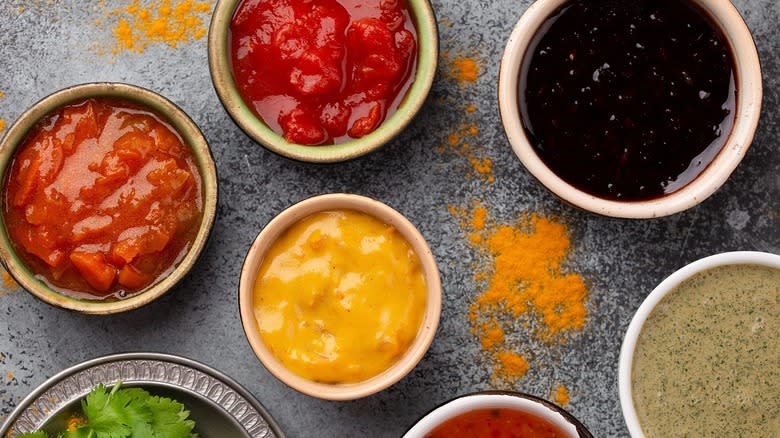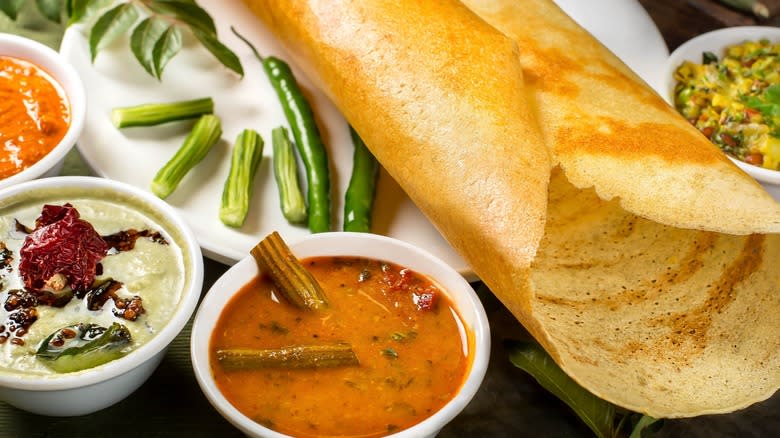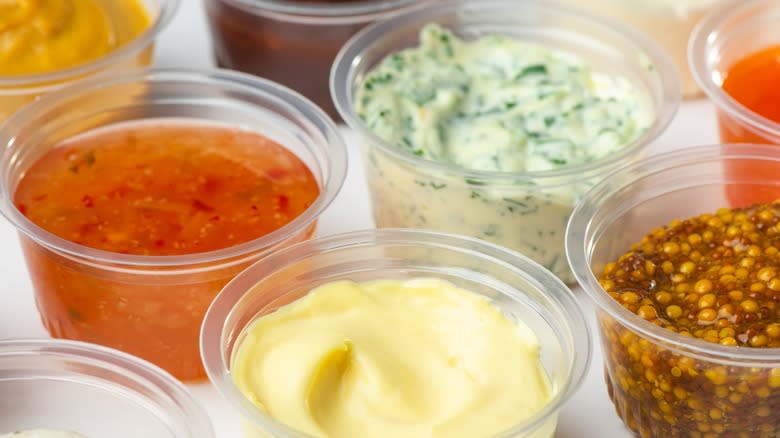The Difference Between Chutney And Sauce

Condiments can transform your meal from basic and boring to flavorful and fantastic. The proof is in ketchup's ability to awaken a french fry to its fullest potential. Most cultures have some form of a ubiquitous condiment that gets slathered on pretty much everything. For example, in India, you're unlikely to eat a meal without a serving of chutney on the side. Chutney is a sauce made with fruits and vegetables that often has a relish-like consistency.
Just as you're likely to see ketchup and mustard on the table at diners and other restaurants in the United States, you're likely to receive a variety of chutneys to accompany your meal at Indian restaurants. Chutney recipes and flavors vary from state to state in India, and many households have their own version of this condiment, too. While chutney has some of the same applications as many sauces, there are some important distinctions between the two.
Read more: 12 Little-Known Facts About Salt
What Is Chutney?

The history of chutney is as rich and complex as its flavor. References to this Indian condiment can be traced back to 500 B.C. in Sanskrit literature. Chutney was developed to preserve fresh fruits and vegetables, allowing people to eat them outside their growing seasons.
Today, most chutneys have a fruit base, but it's common to find vegetables and other ingredients -- such as herbs -- in them. Furthermore, the flavor profiles of chutneys are diverse; they can taste sweet, spicy, or savory. There are hundreds of possible flavors to put in chutneys, but some commonly found options include mango chutney, mint chutney, coconut chutney, and tomato chutney. They're also versatile: Chutney makes a delicious addition to a cheese board or a flavorful marinade or condiment for pork, beef, and chicken.
The texture of this condiment is what primarily distinguishes it from a sauce. Because it is made from slow-cooking fruits and vegetables, chutney often has a chunky yet spreadable consistency and is created similarly to jam. Sauce, on the other hand, is typically much thinner.
What Is Sauce?

Sauces and chutneys are more or less prepared the same way, but sauce typically gets strained or blended to smooth out its texture. Compared to chutney, a sauce has a runny consistency. Based on its definition, a sauce is a liquid (or mostly liquid) blend of ingredients that are made to accompany food.
Like chutney, sauce is a broad term with numerous recipes ranging from sweet to savory to spicy. A sauce also serves the similar purpose of supercharging recipes with flavor. For example, you can use a sauce as a dip, condiment, spread, or vessel for other ingredients. Just as there are certain widespread chutney flavors in India, French cooking specifies five sauces, known as the "mother sauces," which are considered essential culinary knowledge. Mastering this list is the secret to making incredible sauces. Many cooks believe the mother sauces — béchamel, Hollandaise, velouté, Espagnole, and tomato — are the foundation of all other sauces.
Read the original article on Mashed.

 Yahoo Finance
Yahoo Finance 